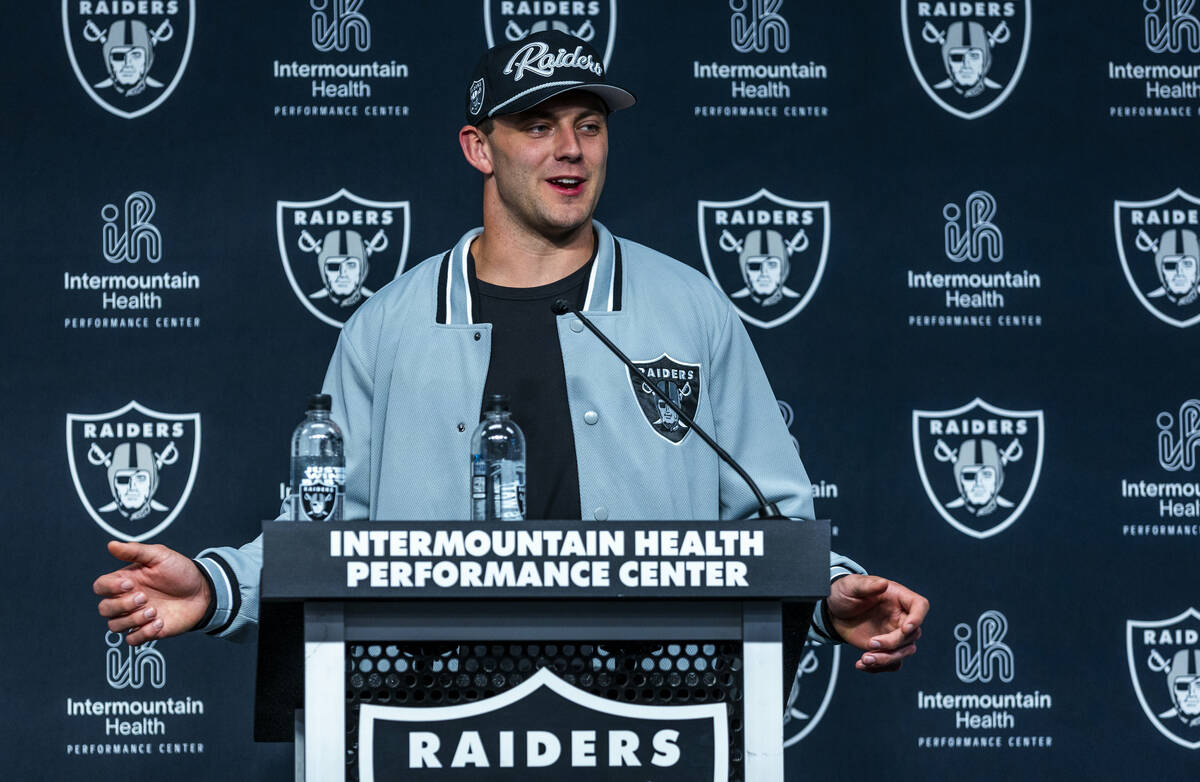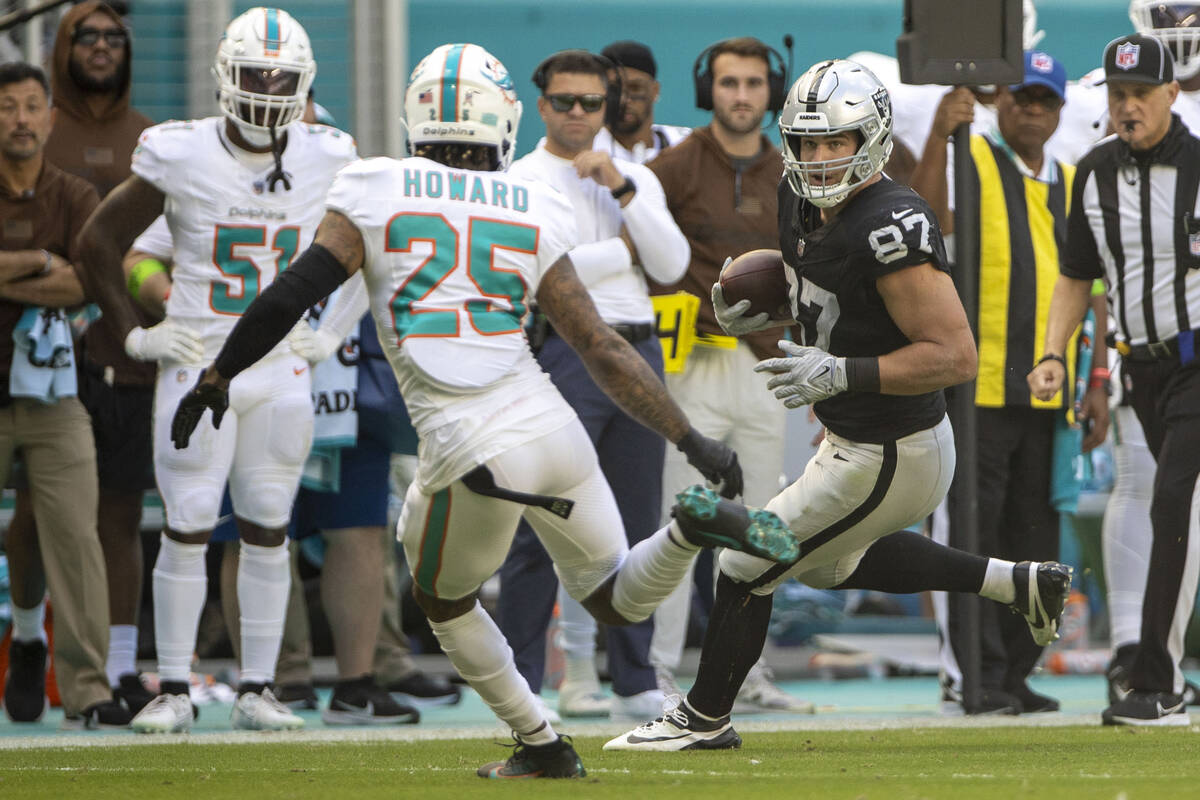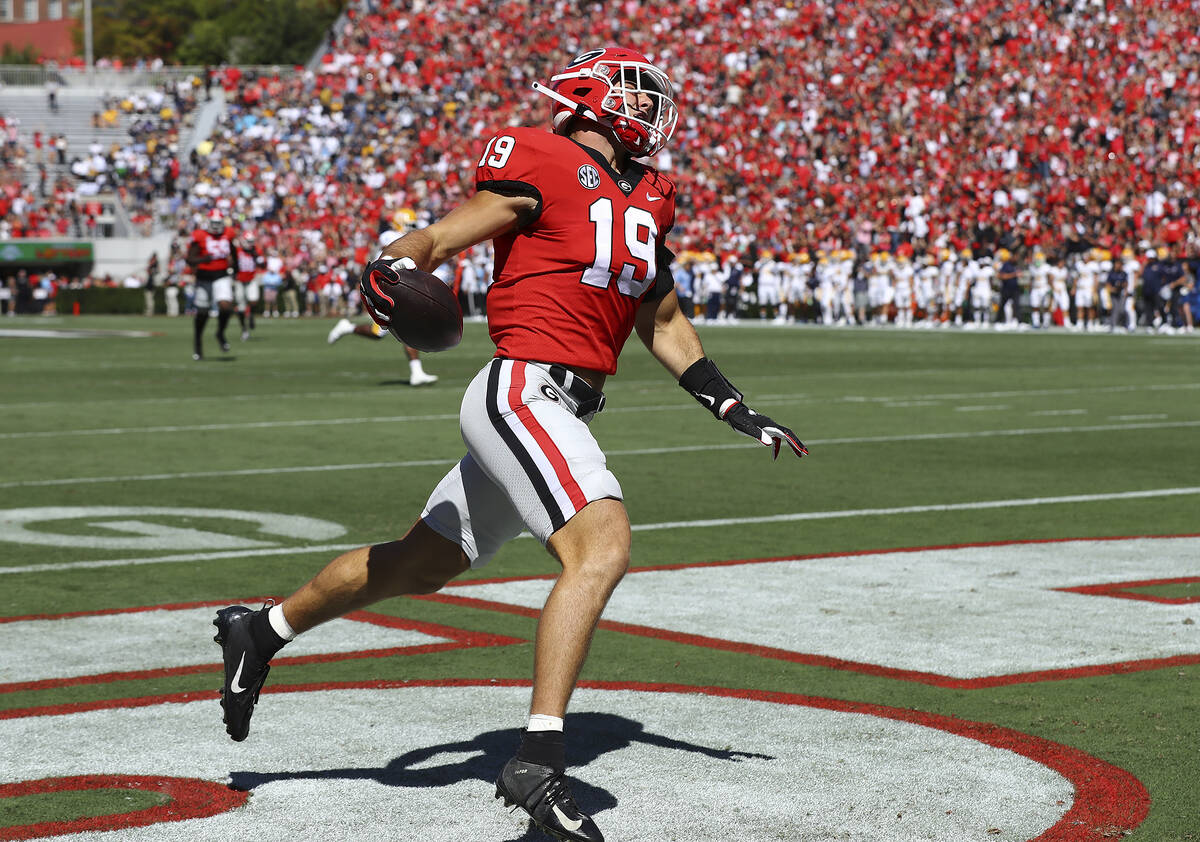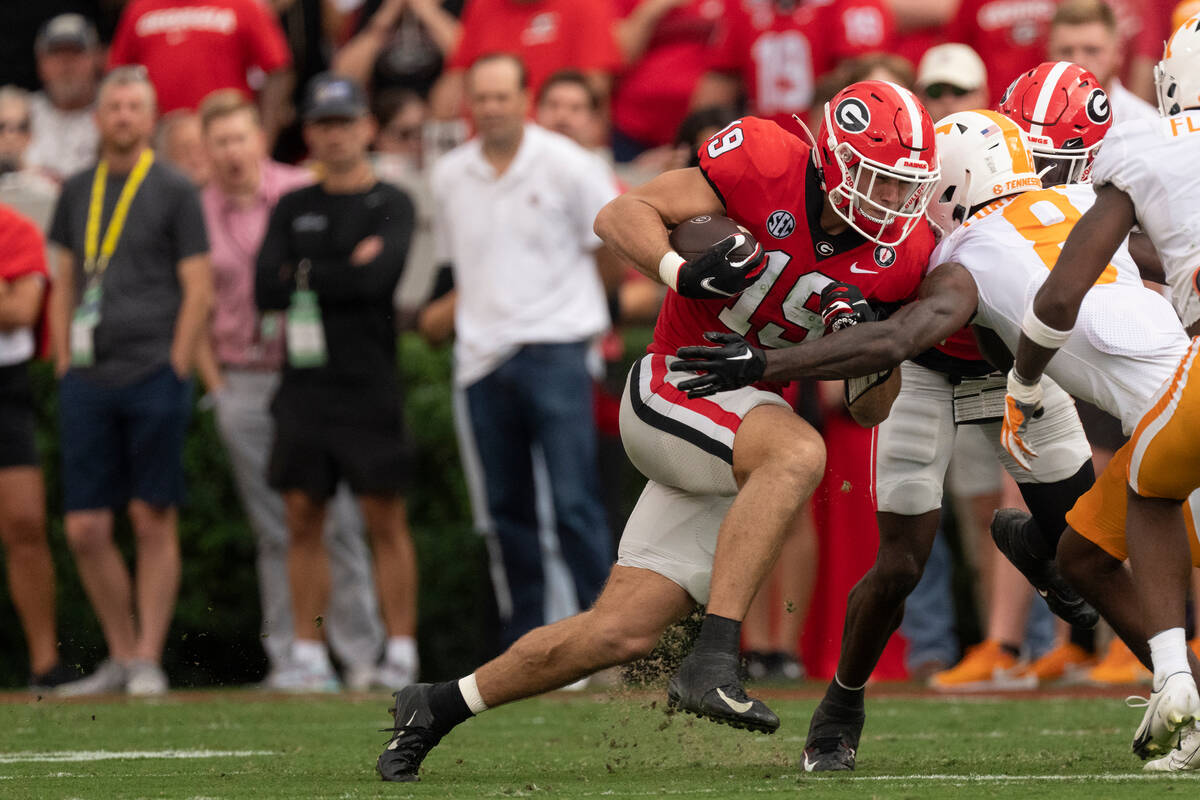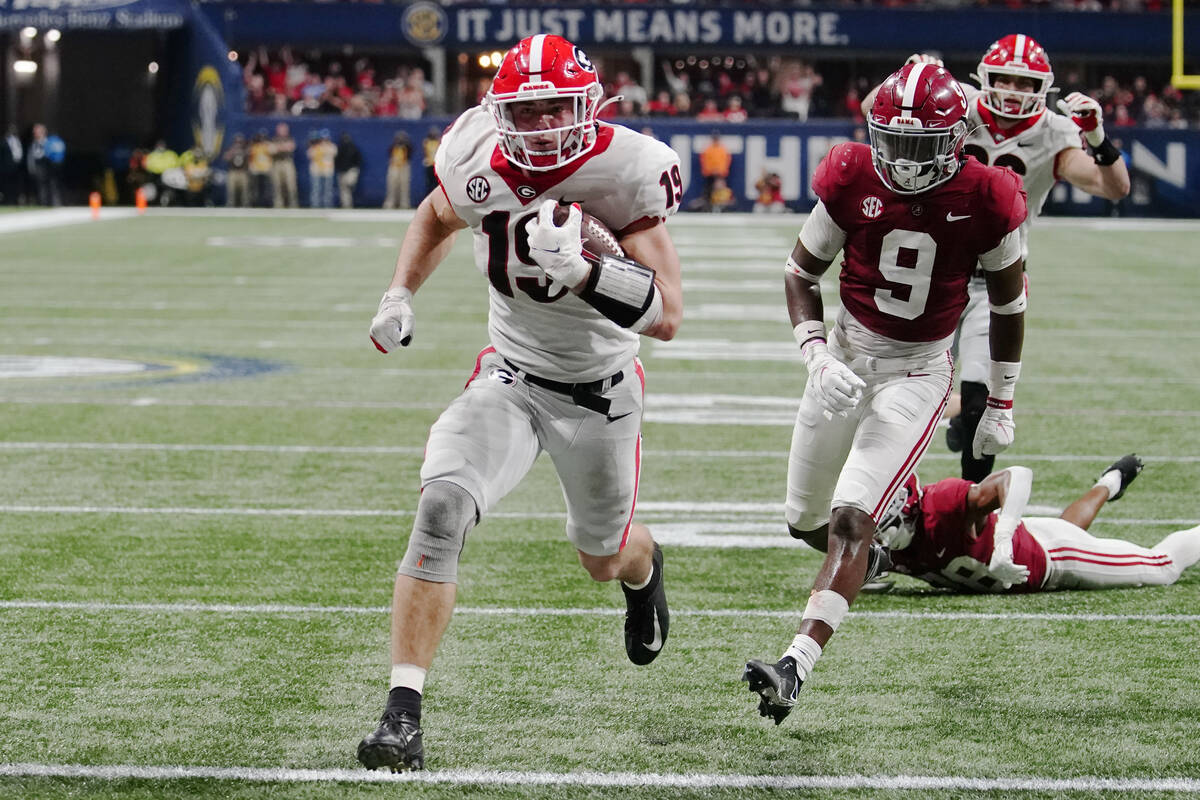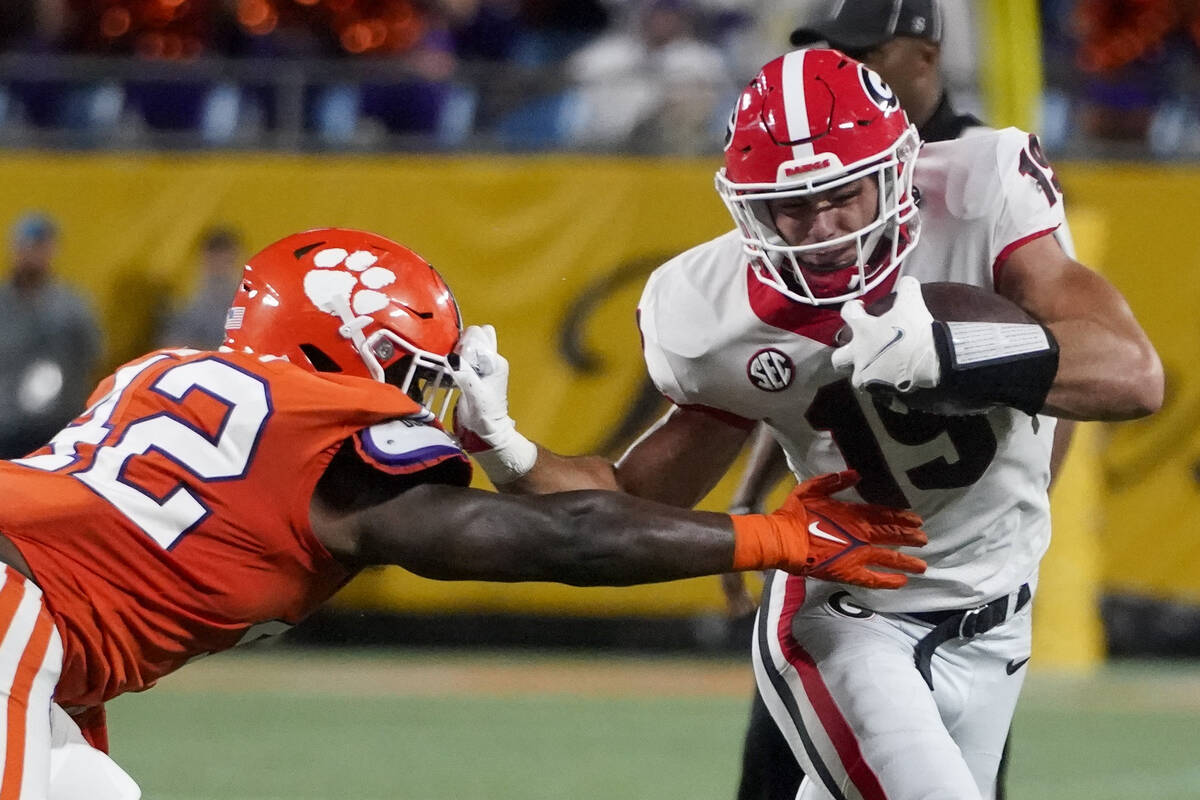How will the Raiders use tight ends Brock Bowers and Michael Mayer?
The Raiders pulled off one of the surprises of Day 1 of the NFL draft on April 25 when they took Brock Bowers with the 13th overall pick.
It wasn’t that the Georgia tight end wasn’t talented enough to be taken there. It was about the position he played. A tight end wasn’t believed to be high on the Raiders’ wish list after they traded up to take Michael Mayer in the second round last year.
The moved raised questions. Was the Bowers pick an indictment of Mayer? Did the Raiders err by using two high picks on a non-premium position?
There are valid concerns. But the Raiders had a thought process behind the decision.
New offensive coordinator Luke Getsy used 12 personnel — which consists of one running back, two tight ends and two wide receivers — a lot with the Bears last year. Only seven NFL teams used the offensive formation more often than Chicago did.
The Raiders may be near the top of the 12 personnel leaderboard next season with Bowers and Mayer both on the roster. The duo could change the whole dynamic of the team’s offense.
How it could work
This setup should be nothing new for Bowers and Mayer.
They both played in college offenses that leaned on multiple-tight end sets. They both thrived in that setting as Swiss Army knife-type weapons that created matchup problems for the defense.
The two are dangerous in different ways.
Mayer, listed at 6 feet, 4 inches, 265 pounds, is a physical presence with an advanced feel for the position. He can create separation in man coverage against smaller defenders or find space in zone coverage. He’s also a punishing runner with the ball in his hands and an effective blocker.
Bowers, at 6-4, 230, is faster and more fluid. He knows how to attack different defenses as well, but he’s such a good athlete that sometimes the best approach is to just get the ball in his hands and watch him go.
A good example of this came during Bowers’ sophomore season, when he took a handoff on a fly sweep 75 yards for a touchdown against Kent State on Sept. 24, 2022.
Limitless possibilities
Having a more traditional tight end in Mayer should allow the Raiders to use Bowers in creative ways. They don’t have to pigeonhole their new first-round pick into a specific role on offense.
The Patriots once used Rob Gronkowski and Aaron Hernandez in a similar fashion and achieved great success on the field. Gronkowski often lined up as a wide receiver with Hernandez on the line of scrimmage. Sometimes, the Patriots even lined them both up side by side next to two traditional receivers.
It set up all sorts of mismatches on offense. Most cornerbacks were too small to defend Gronkowski and Hernandez, and most linebackers were too slow.
The Raiders could have similar visions in mind with Bowers and Mayer.
Other benefits
The Raiders’ philosophy with tight ends is similar to the one Bowers experienced at Georgia and Mayer experienced at Notre Dame.
Tight ends don’t get the ball until they prove they can block. Both players showed they were willing to get their nose dirty in college and Mayer improved at blocking throughout his rookie season.
The Raiders will need to be able to run as well as pass out of 12 personnel. Mayer should line up often on the line of scrimmage while Bowers will be in the slot. That should allow Bowers to pick off smaller defenders as a blocker while Mayer can assist the offensive line.
The two should open up space in the passing game if opponents have to respect them as road graders as well. That could lead to more room to run for wide receivers Davante Adams and Jakobi Meyers.
The Raiders averaged 19.5 points per game last season, 23rd-most in the NFL. It’s not hard to see why they think their first-round pick could help them change that.
Contact Vincent Bonsignore at vbonsignore@reviewjournal.com. Follow @VinnyBonsignore on X.



